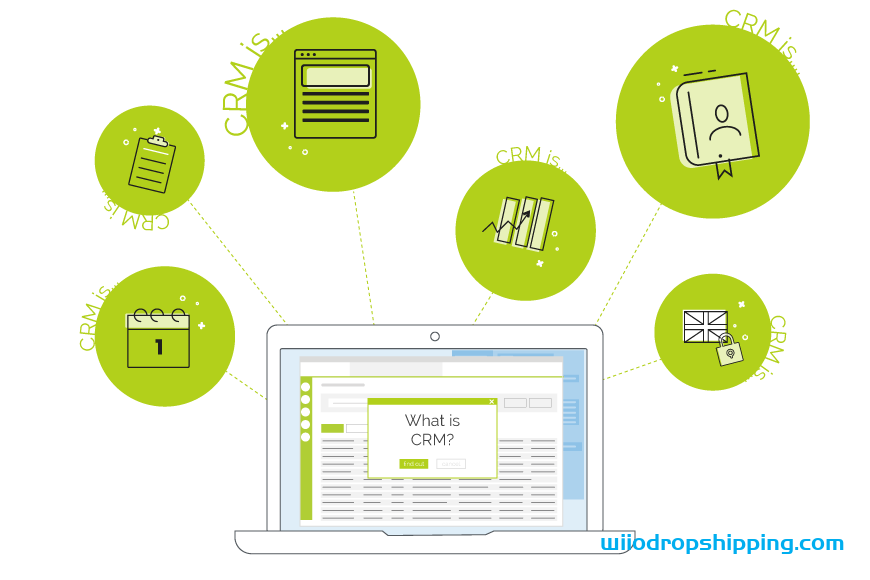Physical Address
304 North Cardinal St.
Dorchester Center, MA 02124

Google the phrase ‘CRM failure’, and a stack of articles will pop up. This implies CRM implementation failure is not unusual. Various studies indicate that most attempts to shift to CRM software fail. For instance, Gartner indicates that about 50 to 70 percent of CRM projects fail to improve company performance or result in losses. Like all other strategic implementations, moving to a CRM system is not easy. However, it is not hard either.

Most CRM projects fail because businesses fail to observe a few elements during the move. Some of these elements include;
Customer relation management is not a software program. It is a business strategy specifically designed to enhance the relationship between the business and customers. This business strategy is powered by enabling technologies called CRM software. Anne Guethoff, Managing Partner n’fuse solutions, asserts that most CRM projects fail because people confuse strategy with software. They expect the software to ‘bring the content and strategic direction for marketing, sales, and service. However, a system can only map and structure strategic content, but cannot create it.’ In other words, CRM systems fail because businesses do not support them; instead, they expect to benefit from them without investing in the right inputs.
The success of any project depends on the clarity of goals and objectives. CRM projects with unclear goals are likely to have questionable completion and fictitious ROI. Unfortunately, most CRM implementation initiatives suffer from poor or lack of clear objectives. Poor objectives stem from misconstrued comprehension of what the business intends to benefit from the system.
People are naturally resistant to change. When resistance is not quickly addressed and is given space to develop into widespread defiance, CRM implementation failure becomes inevitable. A good number of organizations that report failed CRM system adoption cite lack of cooperation from employees. Furthermore, evidence suggests that these organizations do not invest in change management.
The efficiency of CRM systems significantly depends on the quality of data it holds. In most cases, data in legacy systems and manual systems is dirty, meaning it is inaccurate, inconsistent, and outdated. Organizations that directly move data from old systems to CRM systems are likely to record inferior results when using the technology.
Businesses can secure the success of CRM projects by providing enough time for system implementation and investing in internal effort. Besides, before settling for any system, thorough research should be conducted to ascertain business needs and identify a user-friendly system that meets those requirements.
Other aspects to focus on when shifting to a CRM system includes;
Employees are more likely to resist using the system when they are not involved in the implementation process. Alex Haimann, head of business development at Less Annoying CRM, asserts that the best way to avoid instances of defiance is to make everyone enthusiastic about moving. Change management programs can also be initiated to help employees understand the need for change.
The implementation process must have measurable goals. Clearly outlined goals help the implementation team determine the progress and make relevant adjustments to ensure the project’s success. The strategy serves as the map to reach the intended goals.
Finally, data fuels CRM initiatives. The primary focus is to ensure minimal data loss and the transferred data is as clean as possible. The more accurate the data is, the more users will find it easier to use. Besides, clean data will help the organization start reaping the benefits of the system early.
Choosing new CRM
Now that you know why CRM projects fail and how to overcome causes of these failures, you might be asking yourself why businesses would invest time and resources and risk failure when they can stick to their current systems. SuperOffice.com asserts that businesses should switch to new systems when they feel they have outgrown their current systems, when the current systems’ user interfaces are not convenient for users, and when the system has too many unnecessary confusing features. Inability to integrate with other systems and justified system rejection by employees may also compel businesses to switch CRMs.
Businesses that may be forced to switch to a new system should consider a few factors when shopping. These factors include ease of use and training of employees, ability to integrate with ERP and other apps, vendor support, affordability, support for customization, and should be scalable.